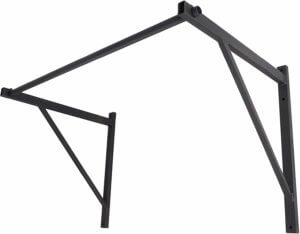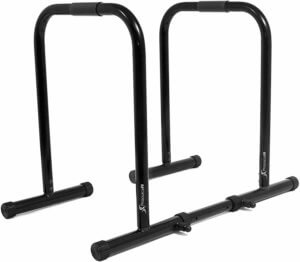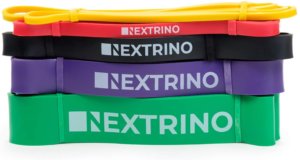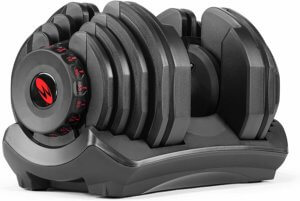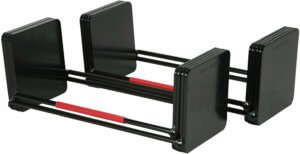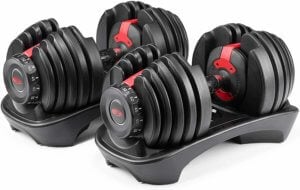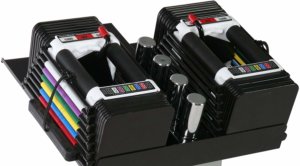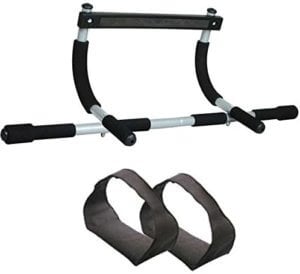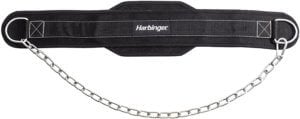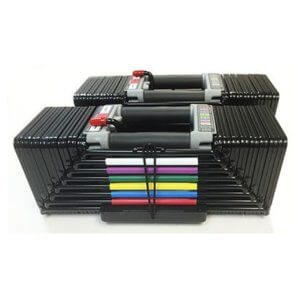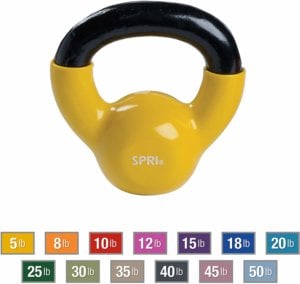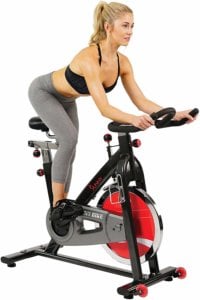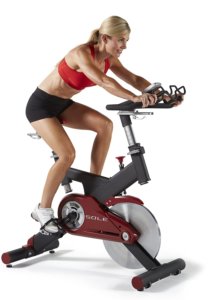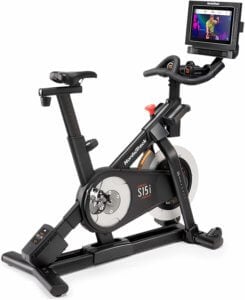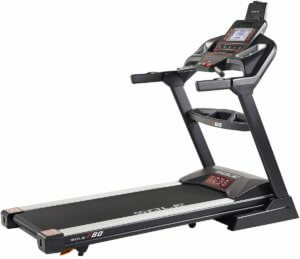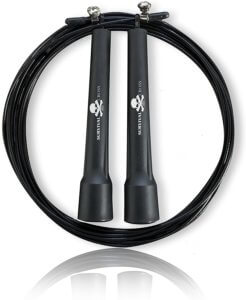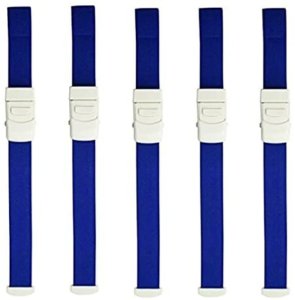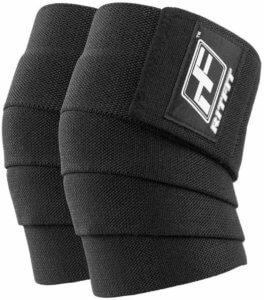Key Takeaways
- Research shows that bodyweight, band, and dumbbell exercises can be effective for gaining muscle and strength if you make them difficult enough.
- Although bodyweight exercises alone can work, you’ll get better results if you can also use bands or dumbbells.
- Keep reading to learn the exact home workouts you should follow until you can get back in the gym (and make sure you read to the end to learn the advanced home workout strategies!).
Well, here we are, quarantined because of this VIRAL BOOGALOO blitzing around the world like it’s 1941, ravaging the defenseless lungs of tens of thousands of men, women, and children.
Gyms are shuttered, Charmin Ultra Soft is now worth its weight in gold ammo, and protein bars have become a prized delicacy.
The worst part for us fitness folk?
HOME. WORKOUTS.
Because for most of us, that means instead of our divine daily communion with the iron, we have to putz around with boring bodyweight exercises and bands.
Guess what, though? Home workouts don’t have to be an unproductive slog.
Although you can’t fully replicate the effectiveness of compound weightlifting, you can still gain (or at least maintain) muscle and strength with a well-designed home workout routine consisting of bodyweight exercises. And if you have some bands or dumbbells, that’s even better.
So, if you want to learn how to work out at home when you can’t go to the gym, keep reading. You’ll learn the best bodyweight, band, and dumbbell exercises, and I’ll share workout routines you can start right away to stay swole through these trying times.
Before we get to that, though, let’s address a question I’m sure you’ve asked yourself already.
Table of Contents
+
Want to listen to more stuff like this? Check out my podcast!
Should You Go to a Gym Right Now?
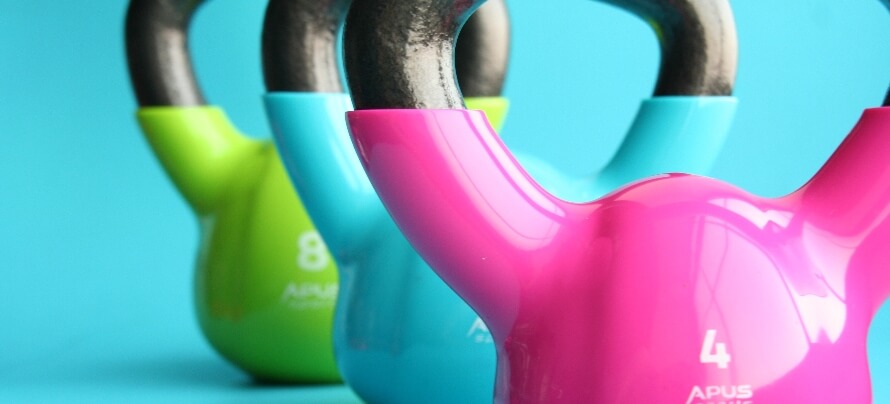
No.
Most gyms are currently closed, but not all of them.
For instance, there’s a gym ten minutes from my home that had a member test positive for the coronavirus a few days ago. The owner’s plan was to thoroughly clean the space and reopen as soon as possible, possibly even today.
And I won’t be going there, even if it’s limited to ten people at a time.
Coronavirus is spread when microscopic particles of saliva, mucus, or other fluids from the respiratory system of an infected person make their way into the respiratory system of a healthy person.
In other words, you get the disease by breathing in someone else’s infected bodily fluids.
The main way these respiratory fluids are spread is through sneezing and coughing, which spray infected bodily fluids into the mouths, noses, and eyes of others (why covering your mouth when coughing is so important!).
The virus can spread in less obvious ways, too.
For example, people subconsciously touch their face about 23 times per hour, and about half the time people touch their mouth, nose, or eyes. If you have someone else’s infected fluids on your hands, every touch is an opportunity for it to infiltrate your body. And if you’re infected, your own tainted juices can get on your fingers.
When your hands are contaminated, you can transfer the bug to anything you touch. Contaminated objects that spread disease this way are called fomites.
And gyms are fomite nests.
When you work out, you sweat, rub your face more often than usual, and touch everything you use, smearing respiratory droplets onto plates, barbells, benches, machines, cables, pull-up bars, and so forth.
And if you’re infected with the coronavirus, you turn them all into fomites.
Then, when the next person comes along and touches any of the stuff you used, they become a carrier for the disease, spreading it further around the gym, and likely wind up infecting themselves as well.
Not pretty.
Some people are saying you can still go to the gym if you’re especially mindful of wiping off equipment before and after you use it, washing your hands thoroughly before and after you work out, applying hand sanitizer throughout your workout, and keeping your hands out of your mouth, nose, and eyes.
This made sense a couple weeks ago, but not now, while the gears of our economy are grinding and public health officials are urging us to help “flatten the curve” while they work to prepare, get more resources and equipment, and ensure everyone who needs treatment can get it.
What if you practice good hygiene, your gym carefully cleans all of the equipment multiple times per day, and there aren’t that many people present when you work out? Aren’t your chances of getting sick low?
Probably, but if you do get infected with the coronavirus, there’s another problem: you could become a “silent carrier,” or someone with mild or even no symptoms (yet) who spreads infected particles everywhere they go.
How could this be?
While this novel coronavirus (SARS-CoV-2) isn’t as crippling as many other pathogens (or as many people think), it’s highly contagious. That is, it might not knock you on your ass (it may only give you a cough and fever), but it’s easily transmitted to others.
For example, someone infected with the coronavirus that spread rapidly in 2002 and 2003 (causing SARS) infected three others before they recovered, and back in 2009, someone with H1N1 (“swine flu”) infected around 1.5 people before they recovered.
How does the SARS-CoV-2 virus stack up?
While scientists are still gathering data, a team of researchers at the IRCCS Foundation National Cancer Institute in Italy estimated that on average, a person with COVID-19 will infect 2.2 others before they recover.
They also found that you generally have to be in close contact with an infected person to get the disease. “The spread, in fact, is primarily limited to family members, healthcare professionals, and other close contacts,” concluded the researchers.
So, in the final analysis, do your immune system and the people around you a favor, and stay out of any gyms that are staying open during this outbreak.
Get 9 Bodyweight, Band, and Kettlebell/Dumbbell Home Workout Plans for Free
If you just want to know how to train while your gym is closed to maintain (or gain!) as much muscle and strength as possible, this home workout bundle is for you.
You’ll get . . .
- 3 different bodyweight, band, and dumbbell/kettlebell home workout plans for beginner, intermediate, and advanced weightlifters.
- Form demonstrations for all 80 exercises in all 9 programs.
- The best home workout equipment for getting the most out of your workouts.
The Science of Home Workouts
Putting together an effective home workout routine is just like putting together any other workout routine, but with more constraints.
And by that, I mean you probably won’t have a barbell or squat rack, a full selection of dumbbells (or any), or machines—the stuff that your normal workout routine calls for.
Instead, you have your body and maybe some bands and a limited number of dumbbells or kettlebells. And this has its downsides.
Bodyweight exercises aren’t as effective as many weightlifting exercises for gaining strength and muscle, because they’re not as effective at forcing your muscles to produce higher and higher levels of tension (progressive tension overload).
Progressive overload is the primary driver of muscle and strength gain, and the best way to achieve it is increasing the amount of weight you can lift (getting stronger). This is why strength is closely related to muscle size. Show me a guy who can squat double his bodyweight for reps, and I’ll show you a big set of wheels.
Bodyweight workouts tend to increase difficulty by increasing reps, but not load (weight). While this is good for improving muscle endurance, it’s not going to get you very far in terms of strength and size.
In other words, building up to a hundred push-ups or thirty pull-ups in one go is impressive, but it won’t result in as much muscle growth as working up to bench pressing one and a half times your weight or deadlifting twice your weight for reps.
There’s good news, though:
If you’re brand new to resistance training, you can gain muscle and strength with bodyweight exercises, and if you’re not, you can use them to maintain much of your strength and muscle mass for several weeks or months.
And if you have dumbbells or bands on hand, your prospects only get better.
In fact, based on my own experience working out, and working with thousands of others, talking with researchers and athletes on my podcast, and my own understanding of the scientific literature, I’d say this to an intermediate or even advanced weightlifter:
You can probably maintain your strength and muscle mass for a month or two with a bodyweight-only workout routine, and at least two to three months with the right band or dumbbell workout routine (like the ones you’ll learn in this article).
The primary reason for this is research shows that so long as you take sets close to failure, both high rep sets (~15 to 20 reps) and low-rep sets (~4 to 6 reps) and everything in between cause similar amounts of muscle growth.
(This is only true up to around 20 or 30 reps, however—doing 100 reps to failure isn’t as effective for building muscle as 20 reps to failure, for instance).
Thus, if 20 pushups brings you close to absolute muscle failure, it’ll probably produce about as much stimulus for muscle growth as a set of 6 reps of bench press also taken close to failure.
And so bodyweight exercises aren’t inherently worse than barbell exercises, but they can only get you so far, because it’s hard to apply progressive overload to them the way you can with barbell and dumbbell exercises.
For example, you can just add weight to the bench press when you’re ready to make it harder, but how are you supposed to progress on an exercise like push-ups if you can already do 20, 30, or 40 reps of the most difficult variation?
You can wear a weighted backpack, put a plate on your back, use bands, or even have someone stand on your shoulder blades, but eventually, you’ll run out of options.
What’s more, most push-up modifications apply force inconsistently. For example, if a band isn’t wrapped around your shoulders in the same spot every time, the resistance produced can vary set to set or rep to rep. Or if a weighted backpack slides down your back halfway through the set, the exercise becomes easier. You get the idea.
And so progression on bodyweight exercises often boils down to just adding more reps to each of your sets. This is better than nothing, but beyond the 20-rep mark, it just isn’t going to move the needle much in terms of muscle or strength gain. You can also do more sets, but this too quickly hits a point of diminishing returns.
So, once you can do 20 to 30 reps of a bodyweight exercise, you have three options:
- Keep doing your current workouts and hope to maintain your gains instead of making progress (a perfectly viable option over the next few weeks).
- Use a more challenging variation of the exercise. For example, feet-elevated push-ups instead of regular pushups, pullups instead of chinups, and pistol squats instead of bodyweight squats.
- Use bands or dumbbells to make your workouts even more difficult (if you have access to them).
Although the first option is fine for a few weeks, your workouts quickly become boring. You’ll also likely lose some strength and muscle mass if you’re an experienced weightlifter doing this for more than a month or two.
The second option is more effective, but you’ll eventually run into the same problems—not difficult enough to keep gaining or at least maintaining muscle and strength.
The third option is the best. By using bands or, even better, dumbbells, you can make your workouts significantly more challenging, enjoyable, and productive.
Before we get to the workouts, though, let’s go over the best bodyweight, band, and dumbbell exercises you can do.
The Best Bodyweight Exercises
Search for the “best bodyweight exercises,” and you’ll be met with an endless list of unhelpful listicles.
The good news is you only need to focus on a handful of bodyweight exercises to get most of the benefits that bodyweight training has to offer.
You don’t need any special equipment to do these exercises, either (natch), although a pullup bar is nice to have.
Here’s a good wall-mounted option, which also makes it easier to do dips:
And here’s a pullup bar you can mount in a doorway:
If you don’t have a pullup or chinup bar, you can still do both of these exercises by hanging onto any overhang in or outside your house, such as basement beams, attic rafters, doorways, and anything else you can hang from safely.
Another inexpensive and handy piece of equipment for making your bodyweight training more effective is a dip stand, like this:
With this you can do dips (shoulders, chest, and triceps) and inverted rows (back and biceps).
All right, let’s get to the bodyweight exercises, starting with dividing them into six categories:
- Pushing exercises
- Pulling exercises
- Leg exercises
- Core exercises
- Calf exercise (there’s just one)
- Cardio exercises
Here are the best bodyweight exercises in each category, listed from the least to most difficult.
Pushing Bodyweight Exercises
Pushing bodyweight exercises involve pushing vertically or horizontally with your arms, and these exercises train your chest, shoulders, and triceps.
Triceps “Bench” Dip
Chest Dip (requires a dip bar or pullup bar)
Knee Pushup
Pushup
Feet-Elevated Pushup (aka “Decline Pushup”)
Deficit Pushup
Pike Pushup
Dive Bomber Pushup
Diamond Pushup
Weighted Pushup (Requires a Weighted Vest)
Handstand Pushup
Pulling Bodyweight Exercises
Pulling bodyweight exercises involve pulling vertically or horizontally with your arms, and these exercises train your lats, traps, and other back muscles as well as your biceps.
Inverted Row
Negative Chinup
Negative Pullup
Chinup
Pullup
Chinup/Pullup with towel or rope grip
Weighted Chinup with a Dip Belt
Weighted Pullup with a Dip Belt
One-Arm Chinup/Pullup
Leg Bodyweight Exercises
Leg bodyweight exercises involve squatting, stepping, lunging, hip thrusting, and hamstring curling, and these exercises train your quads, hamstrings, and glutes.
Step-Up
Bodyweight Hip Bridge
Bodyweight Single-Leg Hip Bridge
Bodyweight Single-Leg Deadlift
Bodyweight Squat
Bodyweight Bulgarian Split Squat
Russian Hamstring Curl
Shrimp Squat
Pistol Squat
Core Bodyweight Exercises
Core bodyweight exercises train your abs, obliques, and spinal erectors.
Bodyweight Crunch
Bodyweight Situp
Bodyweight Plank
Bodyweight Side Plank
Lying Leg Raise
Hollow Body Hold (aka “Boat Pose”)
Hanging Knee Raise
Knees-to-Elbows
Hanging Leg Raise
Toes-to-Bar
Calf Bodyweight Exercises
Not too many options in this department, but these two are all you need . . .
Bodyweight Calf Raise
Bodyweight Single Leg Calf Raise
Cardio Bodyweight Exercises
These exercises train a variety of muscle groups, but are primarily for keeping your heart rate elevated, burning calories, and enjoying the health benefits of cardio.
Walking Jacks
Jumping Jacks
Jump Rope (requires a jump rope, I like this one)
Burpees
Burpees + Chinups/Pullups
The Best Band Exercises
Exercise bands (bands) are thick rubber bands of varying lengths and thicknesses that you can use to add progressive overload to a variety of bodyweight exercises.
They also allow you to do a handful of isolation movements that can’t be done with just your body weight, like curls, triceps extensions, and side raises.
Ideally, you’d have a variety of different bands ranging from skinny (easier) ones for smaller/weaker muscle groups like your arms to thick (difficult) ones for bigger/stronger muscle groups like your legs, but even one band is better than none.
Here are the bands I recommend:
As with the bodyweight exercises, let’s divide the best band exercises into four categories:
- Pushing band exercises
- Pulling band exercises
- Leg band exercises
- Arm band exercises
- Shoulder band exercise (there’s just one)
Here are the best band exercises in each category.
Pushing Band Exercises
Pushing band exercises involve pushing vertically or horizontally with your arms, and these exercises train your chest, shoulders, and triceps.
Band Chest Press
Band Pushup
Band Overhead Press
Pulling Band Exercises
Pulling band exercises involve pulling vertically or horizontally with your arms, and these exercises train your lats, traps, and other back muscles as well as your biceps.
Band Lat Pulldown
Band Straight Arm Lat Pulldown
Band Horizontal Row
Band Upright Row
Band Deadlift
(Unless you have a very thick band, this isn’t challenging enough to be at the top of the list like the barbell deadlift would be.)
Band One-Arm Horizontal Row
Band Assisted Chinup
Band Assisted Pullup
Band Weighted Chinup/Pullup
Leg Band Exercises
Leg band exercises involve squatting, stepping, lunging, hip thrusting, and hamstring curling, and these exercises train your quads, hamstrings, and glutes.
Band Resisted Squat
You can find plenty of other leg band exercises, but frankly, most of them aren’t worth doing. Things like squats with a band around your knees when squatting, band resisted side leg raises, and so forth, simply aren’t going to move the needle much when you’re already doing other effective bodyweight exercises, which is why I left them off this list.
Arm Band Exercises
These exercises train your biceps and triceps.
Band Biceps Curl
Band One-Arm Biceps Curl
Band Triceps Extension
Band Triceps Pushdown
Shoulder Band Exercises
This exercise trains your shoulders.
Band Side Raise
The Best Dumbbell and Kettlebell Exercises
When you don’t have access to barbells, dumbbells and kettlebells are the next-best thing.
They give you more exercise options than bodyweight or band training, they also give you new ways to add progressive overload to certain bodyweight exercises.
If you don’t currently have a set of dumbbells or kettlebells, a fantastic option is a set of adjustable dumbbells. They take up very little space, but they give you a lot more options than if you were stuck with just bodyweight and band exercises.
Here’s what I have and use:
And here’s another good option:
This set only goes up to 50 pounds, so I recommend you get the 70 to 90-pound expansion kit if the 50-pound dumbbells are too light for you:
As for kettlebells, you can use them in place of dumbbells for almost all of the exercises on this list. Some might be a bit more awkward with kettlebells (triceps extensions and triceps kickbacks), and you’ll have to strap a kettlebell around your waist for weighted chinups and pullups with a clothing, dip belt, workout band.
The main downside of kettlebells is they take up more space than dumbbells (no adjustable options), but if you have them, feel free to use them as a replacement for dumbbells in your workouts.
(And if you don’t have any kettlebells but would like to get some, these are a good choice.)
Let’s divide dumbbell/kettlebell exercises into the four familiar categories:
- Pushing dumbbell/kettlebell exercises
- Pulling dumbbell/kettlebell exercises
- Leg dumbbell/kettlebell exercises
- Arm dumbbell/kettlebell exercises
- Shoulder dumbbell/kettlebell exercises
- Core dumbbell/kettlebell exercise (there’s just one)
Here are the best dumbbell exercises in each category.
Pushing Dumbbell/Kettlebell Exercises
Pushing dumbbell/kettlebell exercises involve pushing vertically or horizontally with your arms, and these exercises train your chest, shoulders, and triceps.
Dumbbell Floor Press
Dumbbell Chest Press
Dumbbell Incline Chest Press
Seated Dumbbell Overhead Press
Dumbbell Weighted Dip
Pulling Dumbbell/Kettlebell Exercises
Pulling dumbbell/kettlebell exercises involve pulling vertically or horizontally with your arms, and these exercises train your lats, traps, and other back muscles as well as your biceps.
Weighted Dumbbell/Kettlebell Chinup
Weighted Dumbbell/Kettlebell Pullup
One-Arm Dumbbell/Kettlebell Row
Two-Arm Dumbbell/Kettlebell Row
Dumbbell/Kettlebell Deadlift
Leg Dumbbell/Kettlebell Exercises
Leg bodyweight exercises involve squatting, deadlifting, and lunging, and these exercises train your quads, hamstrings, and glutes.
Dumbbell/Kettlebell Goblet Squat
Dumbbell/Kettlebell Front Squat
Dumbbell/Kettlebell Romanian Deadlift
Dumbbell/Kettlebell Lunge
Dumbbell/Kettlebell Bulgarian Split Squat
Arm Dumbbell/Kettlebell Exercises
These exercises train your biceps and triceps.
Dumbbell/Kettlebell Biceps Curl
Dumbbell/Kettlebell Triceps Overhead Press
Dumbbell/Kettlebell Triceps Kickback
Shoulder Dumbbell/Kettlebell Exercises
These exercises train your shoulders.
Dumbbell/Kettlebell Side Raise
Dumbbell/Kettlebell Front Raise
Core Dumbbell/Kettlebell Exercise
This exercise trains your core.
Dumbbell/Kettlebell Weighted Situp
Alright, with that out of the way, let’s look at the best bodyweight, band, and dumbbell workout routines.
The Best Bodyweight Home Workout Routine
When it comes to bodyweight workout routines, I like to keep things simple.
I prefer an upper/lower split, where you train your upper body muscles in one workout and lower body muscles in another workout, and four to six workouts per week.
Here’s the basic template I use for upper body bodyweight workouts:
- Push Exercise (3 Sets)
- Push Exercise (3 Sets)
- Pull Exercise (3 Sets)
- Pull Exercise (3 Sets)
- Core Exercise (3 Sets)
And here’s the template I use for lower body bodyweight workouts:
- Leg Exercise (4 Sets)
- Leg Exercise (4 Sets)
- Core Exercise (3 Sets)
- Calf Exercise (3 Sets)
I’m going to give you three different bodyweight exercise routines to choose from: one for beginners, intermediates, and advanced trainees.
Choose whatever program you think best matches your current fitness level, and if you find any of the exercises in the intermediate or advanced workouts too difficult, go with an easier option.
Beginner Bodyweight Workouts
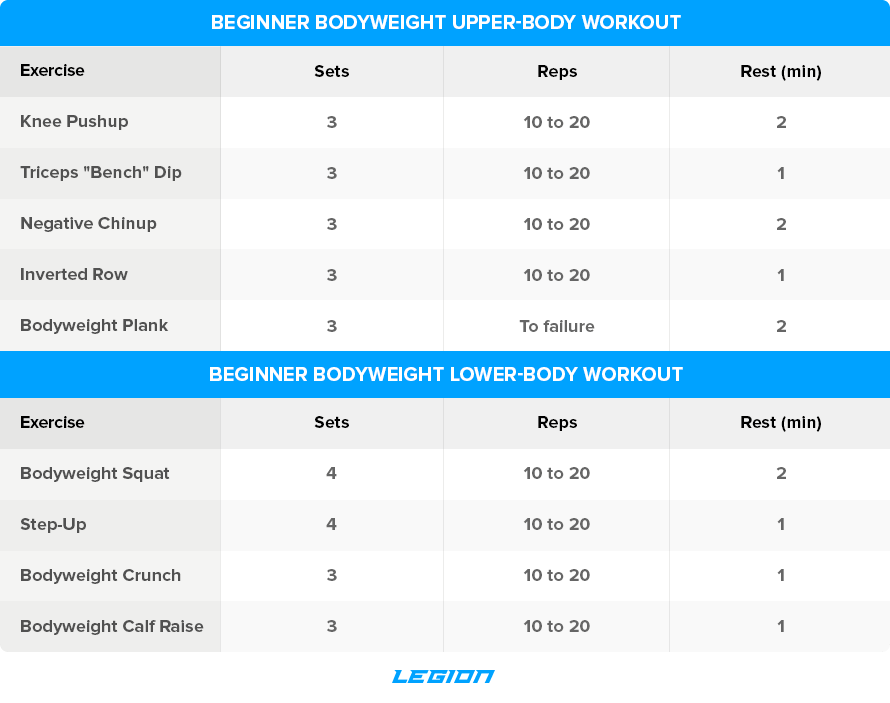
For cardio, do the following circuit for 15 minutes straight, resting as long as you need between each exercise to complete all of the reps for each set:
- 10 Walking Jacks
- 10 Jumping Jacks
- 30 Jumps of Jump Rope (if available)
Intermediate Bodyweight Workouts
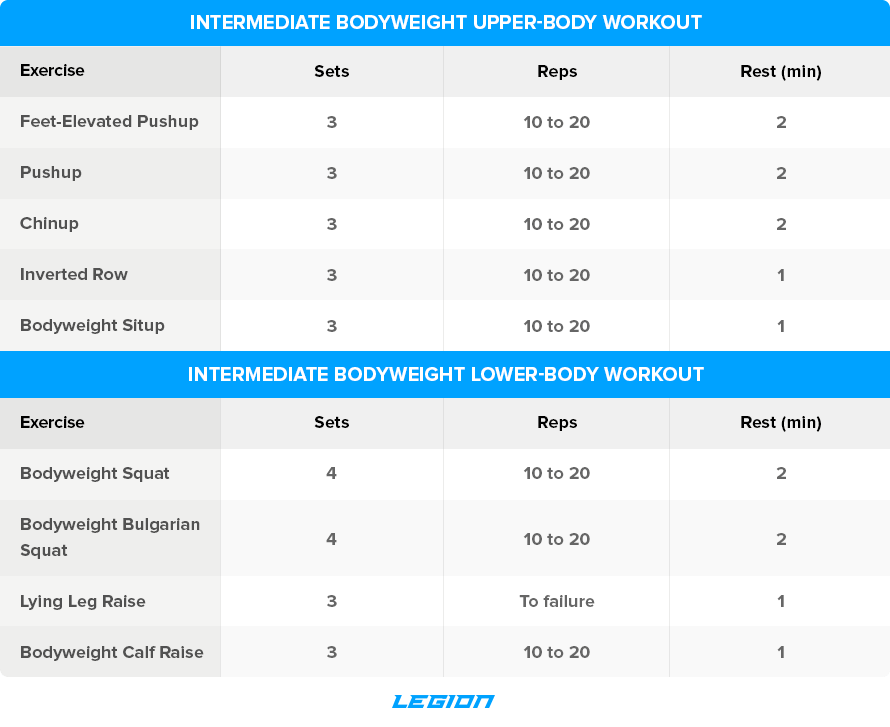
For cardio, do the following circuit for 20 minutes straight, resting as long as you need between each exercise to complete all of the reps for each set:
- 20 Jumping Jacks
- 10 Burpees
- 40 Jumps of Jump Rope (if available)
Advanced Bodyweight Workouts
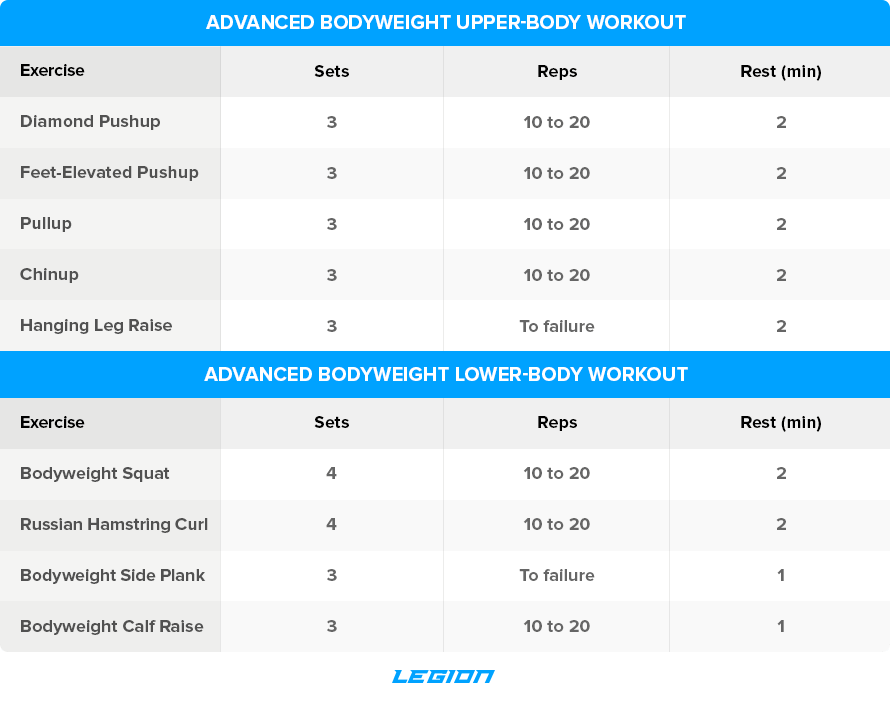
For cardio, do the following circuit for 25 minutes straight, resting as long as you need between each exercise to complete all of the reps for each set:
- 30 Jumping Jacks
- 15 Burpees
- 50 Jumps of Jump Rope (if available)
Here are the details on how to do these workouts:
Train 4 to 6 times per week.
For best results with bodyweight training, I recommend at least four workouts per week (two upper and lower body workouts) and at least one rest day per week.
As for muscle and strength gain (or maintenance), five workouts per week is better than four, and six is better than five.
Here’s how four days might look:
- Monday: Upper
- Tuesday: Lower
- Wednesday: Rest/Cardio
- Thursday: Upper
- Friday: Lower
- Saturday: Rest/Cardio
- Sunday: Rest/Cardio
Here’s five days per week (with an emphasis on the lower body):
- Monday: Upper
- Tuesday: Lower
- Wednesday: Upper
- Thursday: Lower
- Friday: Lower
- Saturday: Rest/Cardio
- Sunday: Rest/Cardio
(And if you want to emphasize the upper body, change Friday’s workout to the upper body.)
And here’s six days per week:
- Monday: Upper
- Tuesday: Lower
- Wednesday: Upper
- Thursday: Lower
- Friday: Upper
- Saturday: Lower
- Sunday: Rest/Cardio
End every set one or two reps short of absolute failure.
You don’t need to take every set to the point of absolute muscle failure, but you do have to come close.
You’ll learn to recognize this point the more you work out—it’s when you strain for a rep and feel pretty sure you won’t get the next one.
Rest a minute or two between sets.
You should rest long enough for your breathing and heart rate to settle down, but not so long that you lose your focus.
This will usually be around two minutes for your more taxing exercises (like bodyweight squats, pushups, and pullups), and around one minute for less difficult ones (like planks, leg raises, and calf raises).
Do 10 to 20 reps per set.
You should be able to do at least 10 reps per set for each exercise. If you can’t get at least 10 reps, you should use an easier exercise variation until you can get at least 10 reps for all sets of that exercise.
If you’re doing the easiest exercise variation and you still can’t get 10 reps, keep doing that exercise until you can get 10 reps for each set.
When you can get 20 reps for all sets of an exercise, it’s time to start doing a more difficult one. To do this, go back to the relevant exercise list above, and start doing the more difficult exercise immediately after the one you’re progressing from.
For example, if you’re doing the beginner workout and get 20 knee push-ups for 3 sets, upgrade to regular pushups. And once you can get 20 regular pushups for 3 sets, switch to feet-elevated pushups.
If you can do 20 reps per set for the most difficult exercise on a list, just do more reps per set (as many as you can until you come close to absolute muscle failure) or move on to a harder workout routine (beginner to intermediate or intermediate to advanced).
Lastly, if the advanced workout is no longer enough of a challenge, you should consider getting bands or dumbbells/kettlebells.
Optional: Do cardio 2 to 4 times per week.
Since you probably aren’t moving as much as you usually do, you have more of a reason to include cardio in your regimen.
My first choice would be cycling (and sprints are particularly useful for reasons I’ll share later in this article), but if you don’t have an exercise bike, bodyweight exercises can work too (and if you add a jump rope, you can really get a sweat going!).
As for when to do cardio, you can do it on the same days you do resistance training or on your rest days. If you do it on the same day, try to do it after your resistance training (so you perform your best).
If you need to do cardio before your resistance training for whatever reason, try to put a couple of hours between the two workouts.
The Best Band Home Workouts
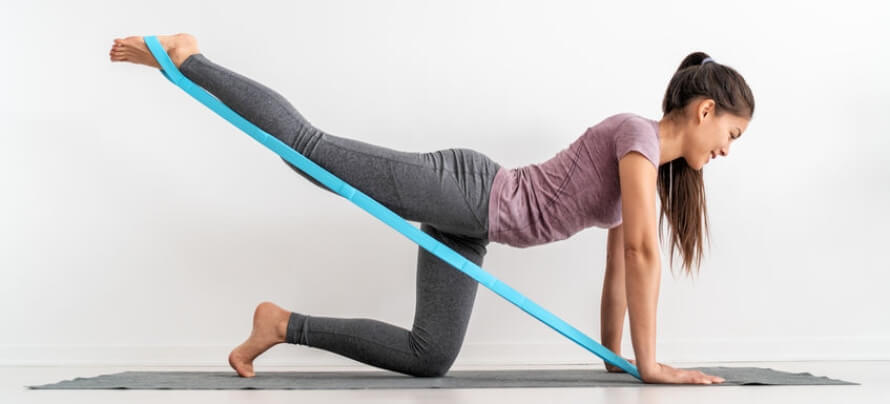
Bands allow you to add resistance to several bodyweight exercises and to do several other exercises that can’t be done with your body weight alone.
As with the bodyweight routine, you’ll follow an upper/lower split, where you train your upper body muscles in one workout and lower body muscles in another workout, and four to six workouts per week.
Here’s the basic template I use for upper body band workouts:
- Push Exercise (3 Sets)
- Push Exercise (3 Sets)
- Pull Exercise (3 Sets)
- Pull Exercise (3 Sets)
- Arm Exercise (3 Sets)
And here’s the template I use for lower body band workouts:
- Leg Exercise (4 Sets)
- Leg Exercise (4 Sets)
- Core Exercise (3 Sets)
- Calf Exercise (3 Sets)
I’m going to give you three different bodyweight exercise routines to choose from: one for beginners, intermediates, and advanced trainees.
Choose whatever program you think best matches your current fitness level, and if you find any of the exercises in the intermediate or advanced workouts too difficult, go with an easier option.
Beginner Band Workouts
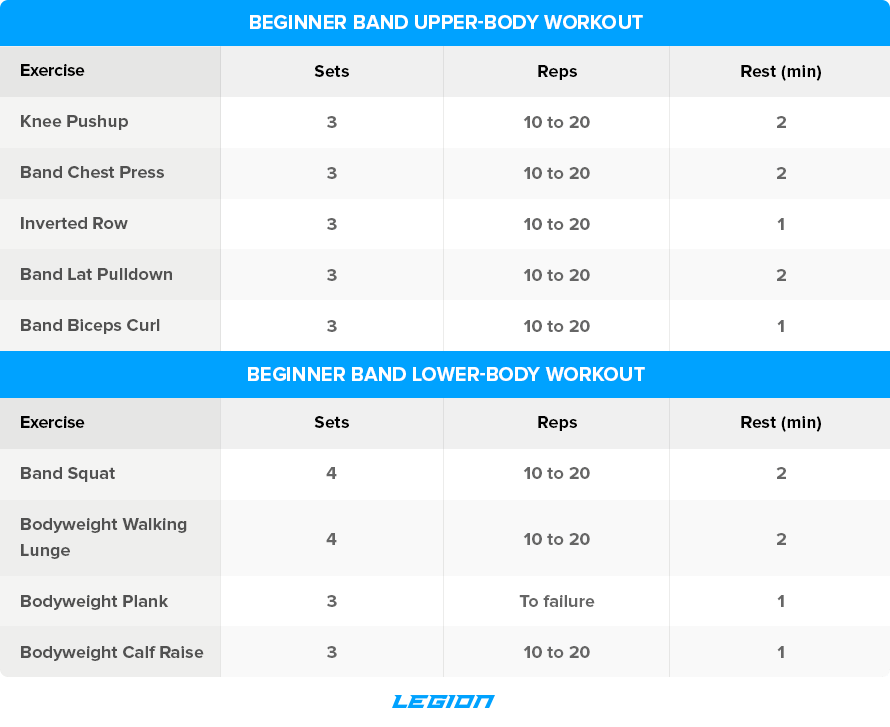
For cardio, do the following circuit for 15 minutes straight, resting as long as you need between each exercise to complete all of the reps for each set:
- 10 Walking Jacks
- 10 Jumping Jacks
- 30 Jumps of Jump Rope (if available)
Intermediate Band Workouts
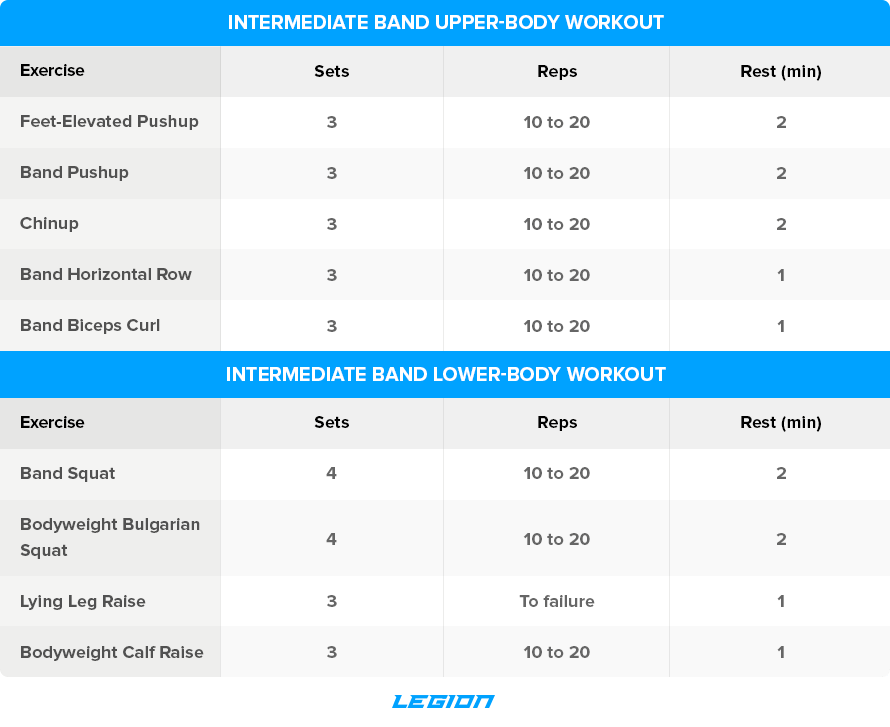
For cardio, do the following circuit for 20 minutes straight, resting as long as you need between each exercise to complete all of the reps for each set:
- 20 Jumping Jacks
- 10 Burpees
- 40 Jumps of Jump Rope (if available)
Advanced Band Workouts
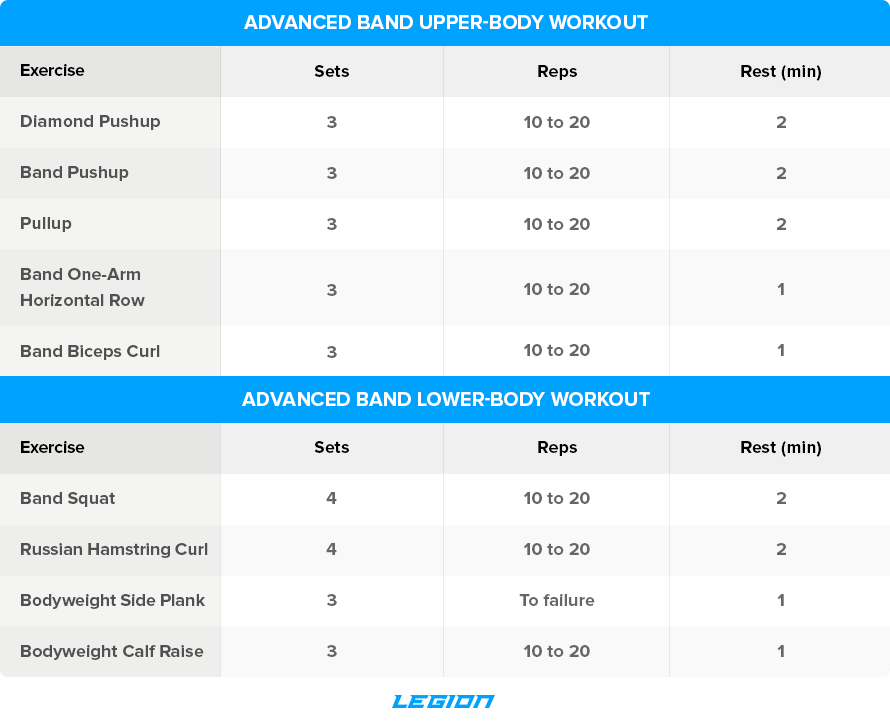
For cardio, do the following circuit for 25 minutes straight, resting as long as you need between each exercise to complete all of the reps for each set:
- 30 Jumping Jacks
- 15 Burpees
- 50 Jumps of Jump Rope (if available)
Here are the details on how to do these workouts:
Train 4 to 6 times per week.
For best results with band training, I recommend at least four workouts per week (two upper and lower body workouts) and at least one rest day per week.
As for muscle and strength gain (or maintenance), five workouts per week is better than four, and six is better than five.
Here’s how four days might look:
- Monday: Upper
- Tuesday: Lower
- Wednesday: Rest/Cardio
- Thursday: Upper
- Friday: Lower
- Saturday: Rest/Cardio
- Sunday: Rest/Cardio
Here’s five days per week (with an emphasis on the lower body):
- Monday: Upper
- Tuesday: Lower
- Wednesday: Upper
- Thursday: Lower
- Friday: Lower
- Saturday: Rest/Cardio
- Sunday: Rest/Cardio
(And if you want to emphasize the upper body, change Friday’s workout to the upper body.)
And here’s six days per week:
- Monday: Upper
- Tuesday: Lower
- Wednesday: Upper
- Thursday: Lower
- Friday: Upper
- Saturday: Lower
- Sunday: Rest/Cardio
End every set one or two reps short of absolute failure.
You don’t need to take every set to the point of absolute muscle failure, but you do have to come close.
You’ll learn to recognize this point the more you work out—it’s when you strain for a rep and feel pretty sure you won’t get the next one.
Do 10 to 20 reps per set.
For band exercises, start with a band thin enough for you to get at least 10 reps for all sets of each exercise, but thick enough to prevent you from doing more than 20 reps.
If you can’t get at least 10 reps on a band exercise, you should follow a bodyweight workout routine until you can.
When you get 20 reps for all sets of an exercise, it’s time to use a thicker band that allows for at least 10 but not more than 20 reps. Once you run out of thicker bands to use, start doing a more difficult exercise with a thinner band.
For example, if you’re doing the beginner workout and get 20 band chest presses for 3 sets with your thickest band, upgrade to band pushups. And once you can get 20 band pushups for 3 sets, switch to band overhead press.
If you can do 20 reps per set for all sets of the most difficult exercise to choose from, just do more reps per set (as many as you can until you come close to absolute muscle failure) or move on to a harder workout routine (beginner to intermediate or intermediate to advanced).
Lastly, if the advanced band workout is no longer enough of a challenge, you should consider getting dumbbells/kettlebells.
Rest a minute or two between sets.
You should rest long enough for your breathing and heart rate to settle down, but not so long that you lose your focus.
This will usually be around two minutes for your more taxing exercises (like band squats, band pushups, and pullups), and around one minute for less taxing exercises (like planks, leg raises, and calf raises).
Optional: Do cardio 2 to 4 times per week.
Since you probably aren’t moving as much as you usually do, you have more of a reason to include cardio in your regimen.
My first choice would be cycling (and sprints are particularly useful for reasons I’ll share later in this article), but if you don’t have an exercise bike, bodyweight exercises can work too (and if you add a jump rope, you can really get a sweat going!).
As for when to do cardio, you can do it on the same days you do resistance training or on your rest days. If you do it on the same day, try to do it after your resistance training (so you perform your best).
If you need to do cardio before your resistance training for whatever reason, try to put a couple of hours between the two workouts.
The Best Dumbbell/Kettlebell Home Workout Routine
You can train all major muscle groups effectively with bodyweight and band exercises, but you can do even better with a set of dumbbells or kettlebells (and especially if you’re an experienced weightlifter).
My equipment of choice for these workouts is a set of adjustable dumbbells. Here’s what I have and use:
And here’s another good option:
As well as the expansion pack that gives you an extra 20 pounds per dumbbell:
You can also use kettlebells for all of the same exercises as dumbbells and to do a few exercises that are a bit harder with dumbbells (like kettlebell swings). For the most part, though, they’re interchangeable in these workouts.
As with the bodyweight and band workouts, you’ll follow an upper/lower split, where you train your upper body muscles in one workout and lower body muscles in another workout, and four to six workouts per week.
Here’s the basic template I use for upper body dumbbell/kettlebell workouts:
- Push Exercise (3 Sets)
- Push Exercise (3 Sets)
- Pull Exercise (3 Sets)
- Pull Exercise (3 Sets)
- Arm Exercise (3 Sets)
And here’s the template I use for lower body dumbbell/kettlebell workouts:
- Leg Exercise (4 Sets)
- Leg Exercise (4 Sets)
- Core Exercise (3 Sets)
- Calf Exercise (3 Sets)
I’m going to give you three different bodyweight exercise routines to choose from: one for beginners, intermediates, and advanced trainees.
Choose whatever program you think best matches your current fitness level, and if you find any of the exercises in the intermediate or advanced workouts too difficult, go with an easier option.
Beginner Dumbbell/Kettlebell Home Workouts
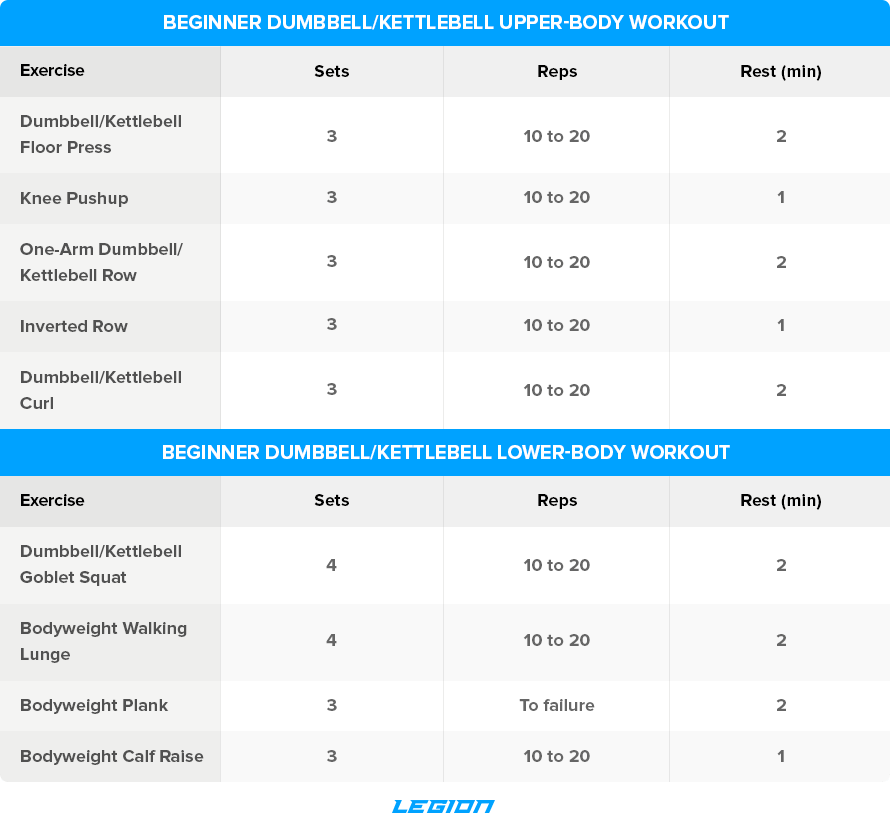
For cardio, do the following circuit for 15 minutes straight, resting as long as you need between each exercise to complete all of the reps for each set:
- 10 Walking Jacks
- 10 Jumping Jacks
- 30 Jumps of Jump Rope (if available)
Intermediate Dumbbell/Kettlebell Workout

For cardio, do the following circuit for 20 minutes straight, resting as long as you need between each exercise to complete all of the reps for each set:
- 20 Jumping Jacks
- 10 Burpees
- 40 Jumps of Jump Rope (if available)
Advanced Dumbbell/Kettlebell Workout
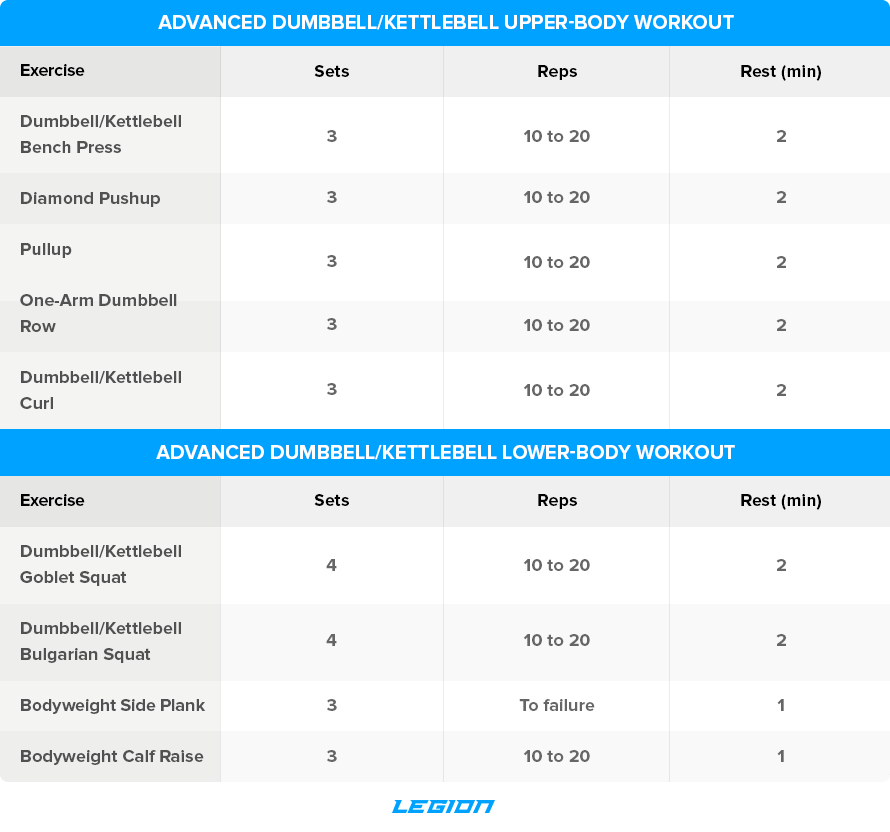
For cardio, do the following circuit for 25 minutes straight, resting as long as you need between each exercise to complete all of the reps for each set:
- 30 Jumping Jacks
- 15 Burpees
- 50 Jumps of Jump Rope (if available)
Here are the details on how to do these workouts:
Train 4 to 6 times per week.
For best results with dumbbell/kettlebell training, I recommend at least four workouts per week (two upper and lower body workouts) and at least one rest day per week.
As for muscle and strength gain (or maintenance), five workouts per week is better than four, and six is better than five.
Here’s how four days might look:
- Monday: Upper
- Tuesday: Lower
- Wednesday: Rest/Cardio
- Thursday: Upper
- Friday: Lower
- Saturday: Rest/Cardio
- Sunday: Rest/Cardio
Here’s five days per week (with an emphasis on the lower body):
- Monday: Upper
- Tuesday: Lower
- Wednesday: Upper
- Thursday: Lower
- Friday: Lower
- Saturday: Rest/Cardio
- Sunday: Rest/Cardio
(And if you want to emphasize the upper body, change Friday’s workout to the upper body.)
And here’s six days per week:
- Monday: Upper
- Tuesday: Lower
- Wednesday: Upper
- Thursday: Lower
- Friday: Upper
- Saturday: Lower
- Sunday: Rest/Cardio
End every set one or two reps short of absolute failure.
You don’t need to take every set to the point of absolute muscle failure, but you do have to come close.
You’ll learn to recognize this point the more you work out—it’s when you strain for a rep and feel pretty sure you won’t get the next one.
Rest a minute or two between sets.
You should rest long enough for your breathing and heart rate to settle down, but not so long that you lose your focus.
This will usually be around two minutes for your more taxing exercises (like goblet squats, dumbbell bench press, and pullups), and around one minute for less taxing exercises (like planks, leg raises, and calf raises).
Do 10 to 20 reps per set.
For dumbbell/kettlebell exercises, start by using a weight that’s light enough you can get at least 10 reps for all sets of each exercise but heavy enough you can’t do more than 20 reps. If you can’t get at least 10 reps with the lightest dumbbells/kettlebells you have, you should follow either the bodyweight or band workout routine.
When you get 20 reps for all sets with a certain weight dumbbell/kettlebell, it’s time to increase the weight. Once again, it should be light enough you can do at least 10 reps and heavy enough you can’t do more than 20 for all sets.
When you get 20 reps for all sets of a bodyweight exercise, it’s time to start doing a more difficult exercise. To do this, go back to the relevant exercise list above, and start doing the exercise immediately after the one you’re progressing from.
For example, if you’re doing the beginner workout and get 20 knee push-ups for 3 sets, upgrade to regular pushups. And once you can get 20 regular pushups for 3 sets, switch to feet-elevated pushups.
If you can do 20 reps per set for the most difficult exercise or with the heaviest weight dumbbells/kettlebells you own, just do more reps per set (as many as you can until you come close to absolute muscle failure) or move on to a harder workout routine (beginner to intermediate or intermediate to advanced).
Lastly, if the advanced workout is no longer enough of a challenge, well, just hope your gym reopens soon. 😛
Optional: Do cardio 2 to 4 times per week.
Since you probably aren’t moving as much as you usually do, you have more of a reason to include cardio in your regimen.
My first choice would be cycling (and sprints are particularly useful for reasons I’ll share later in this article), but if you don’t have an exercise bike, bodyweight exercises can work too (and if you add a jump rope, you can really get a sweat going!).
As for when to do cardio, you can do it on the same days you do resistance training or on your rest days. If you do it on the same day, try to do it after your resistance training (so you perform your best).
If you need to do cardio before your resistance training for whatever reason, try to put a couple of hours between the two workouts.
The Best Home Workout Equipment
Earlier in this article, I mentioned (and linked to) a few pieces of equipment that will come in handy when doing these (and other) home workouts, but here they are again in case you missed them:
Pullup/Chinup Bar
Here’s a good wall-mounted option, which makes it easier to do dips:
And here’s a pullup bar you can mount in a doorway:
Dip Stand
This is helpful for doing dips and inverted rows.
Dip Belt
This allows you to easily add weight to chinups, pullups, and dips.
Adjustable Dumbbells
Here’s what I have and use:
And here’s another good option:
This set only goes up to 50 pounds, so I recommend you get the 70 to 90-pound expansion kit if the 50-pound dumbbells are too light for you:
Kettlebells
You can use these for dumbbell exercises and kettlebell swings. These also have a vinyl coating, so they won’t scratch up your floor.
Weighted Vest
This is a great way to add weight to chinups, pullups, and pushups.
Budget Exercise Bike
Here’s a good budget model to get you started:
Mid-Tier Exercise Bike
Here’s a slightly nicer model that’s a good option if you plan on cycling a few times per week:
High-Quality Exercise Bike
Here’s one of the best exercise bikes you can find, if you want to splurge:
Treadmill
I like this one because it’s durable, quiet (some treadmills are obnoxiously loud), and has some neat features like a built-in heart rate monitor, cooling fans, and MP3-compatible sound system.
Jump Rope
This one is adjustable, durable, and designed so that the rope won’t tangle.
Not ready to buy any of this stuff now, but want a quick shopping list for later? Enter your email address in the form below to download my quick-reference list of the best home workout equipment:
Advanced Strategies for More Effective Home Workouts
There are two little-known ways to increase muscle and strength gain and burn calories while working out from home:
- Blood flow restriction training
- Cycling sprints
Here’s how to do both . . .
Use blood flow restriction training to maximize muscle growth with lighter weights.
Blood flow restriction training (BFR) involves constricting the blood flow to a muscle group while training.
This causes blood to remain inside your muscles for longer than normal, which positively influences muscle growth and strength in several ways.
You can learn more about how this works in this article:
Does Blood Flow Restriction (Occlusion) Training Really Work?
The main benefits of blood flow restriction training is that it allows you to gain muscle and strength while using weights that are only ~20 to 40% of your one-rep max. In other words, the kinds of weights you might be stuck with when doing home workouts.
Thus, even if you can squat 315 and you’re stuck doing goblet squats with 50-pound dumbbells, you can still get in a decent workout if you use BFR.
You can use BFR for your arms and your legs, but there isn’t a good way to use it for your chest, back, core, or glutes.
To do BFR training, you’ll need something to wrap your arms and legs with. I recommend you use medical tourniquets for your arms, like these . . .
. . . and knee wraps for your legs, like these . . .
Here’s how to go about wrapping your limbs:
- If you’re wrapping your arms, the band should be tucked into your armpit.
- If you’re wrapping your legs, the bands should be nudged up against your crotch.
- In terms of tightness, you should be going for a 9 out of 10 for the arms, and a 7 out of 10 for the legs.
Then, simply follow the workout programs listed above. Instead of moving up to the next hardest workout routine when you get 20 reps, though, move up when you get 40 reps (as BFR training makes high-reps more effective).
Use cycling sprints to train your legs.
If you have access to an exercise bike, you can kill two birds with one stone—cardio and leg training.
Research shows that cycling sprints can produce similar gains in muscle size and strength as resistance training (even in well-trained athletes), and multiple studies have shown that adding cycling to a resistance training program can enhance leg muscle growth.
High-intensity cycling sprints tend to be the most effective in this regard, and they also burn more calories in less time than steady-state cardio, which is a nice bonus (more food!).
To incorporate cycling sprints into your home workout routine, here’s what I recommend:
- Warm up with 10 minutes of easy spinning (you should be able to easily talk in full sentences).
- Then, sprint as hard as you can for 30 seconds with enough resistance so you can barely finish before needing to take a break. This should be tough!
- Do 4 minutes of easy spinning.
- Repeat steps 2 and 3 three more times (a total of four rounds).
As your fitness improves, you can increase the number of times you repeat this sequence. I don’t recommend doing more than 10 rounds in one workout, though, as your performance will start to decline sharply.
You can cycle immediately after your resistance training workout, later in the day, or on days you don’t do resistance training. Don’t do it before your resistance training workout, however, because it’ll sap quite a bit of your energy.
If you don’t have an exercise bike, here’s a good budget model:
Here’s a good mid-tier model if you plan on cycling a few times per week:
And if you want to splurge, here’s one of the best exercise bikes you can find:
The Bottom Line on the Best Home Workout Routine
Bodyweight, band, and dumbbell/kettlebell workouts can never fully replicate the effectiveness of heavy barbell lifting.
BUT!
With the right exercises, workout routine, and attitude (don’t let perfect be the enemy of good and all that), you can still maintain or even gain strength and muscle with the workout routines in this article.
The main limitation to these types of home workouts is progression—you often can’t just add weight or resistance like you can with a barbell, machine, and full set of dumbbells that you find in a gym.
Instead, however, you use harder exercise variations, work up to higher rep ranges (~20 to 30 per set), and do more volume (sets) than you normally would in your weightlifting workouts.
So, give the home workout routines in this article a whirl, and let the gains continue in these trying times. 😉
What’s your take on these home workout routines? Have anything else to share? Let me know in the comments below!
Scientific References +
- Mikkola J, Rusko H, Izquierdo M, Gorostiaga EM, Häkkinen K. Neuromuscular and cardiovascular adaptations during concurrent strength and endurance training in untrained men. Int J Sports Med. 2012;33(9):702-710. doi:10.1055/s-0031-1295475
- Lundberg TR, Fernandez-Gonzalo R, Gustafsson T, Tesch PA. Aerobic exercise does not compromise muscle hypertrophy response to short-term resistance training. J Appl Physiol. 2013;114(1):81-89. doi:10.1152/japplphysiol.01013.2012
- Ozaki H, Loenneke JP, Thiebaud RS, Abe T. Cycle training induces muscle hypertrophy and strength gain: Strategies and mechanisms (review). Acta Physiol Hung. 2015;102(1):1-22. doi:10.1556/APhysiol.102.2015.1.1
- Androulakis-Korakakis P, Langdown L, Lewis A, et al. Effects of exercise modality during additional “high-intensity interval training” on aerobic fitness and strength in powerlifting and strongman athletes. J Strength Cond Res. 2018;32(2):450-457. doi:10.1519/jsc.0000000000001809
- Baz-Valle E, Fontes-Villalba M, Santos-Concejero J. Total Number of Sets as a Training Volume Quantification Method for Muscle Hypertrophy: A Systematic Review. J strength Cond Res. July 2018. doi:10.1519/JSC.0000000000002776
- Cascella M, Rajnik M, Cuomo A, Dulebohn SC, Di Napoli R. Features, Evaluation and Treatment Coronavirus (COVID-19). StatPearls Publishing; 2020. http://www.ncbi.nlm.nih.gov/pubmed/32150360. Accessed March 20, 2020.
- Biggerstaff M, Cauchemez S, Reed C, Gambhir M, Finelli L. Estimates of the reproduction number for seasonal, pandemic, and zoonotic influenza: A systematic review of the literature. BMC Infect Dis. 2014;14(1):480. doi:10.1186/1471-2334-14-480
- Bauch CT, Lloyd-Smith JO, Coffee MP, Galvani AP. Dynamically modeling SARS and other newly emerging respiratory illnesses: Past, present, and future. Epidemiology. 2005;16(6):791-801. doi:10.1097/01.ede.0000181633.80269.4c
- Baud D, Qi X, Nielsen-Saines K, Musso D, Pomar L, Favre G. Real estimates of mortality following COVID-19 infection. Lancet Infect Dis. 2020;0(0). doi:10.1016/S1473-3099(20)30195-X
- Li R, Pei S, Chen B, et al. Substantial undocumented infection facilitates the rapid dissemination of novel coronavirus (SARS-CoV2). Science (80- ). March 2020:eabb3221. doi:10.1126/science.abb3221
- Kwok YLA, Gralton J, McLaws ML. Face touching: A frequent habit that has implications for hand hygiene. Am J Infect Control. 2015;43(2):112-114. doi:10.1016/j.ajic.2014.10.015
